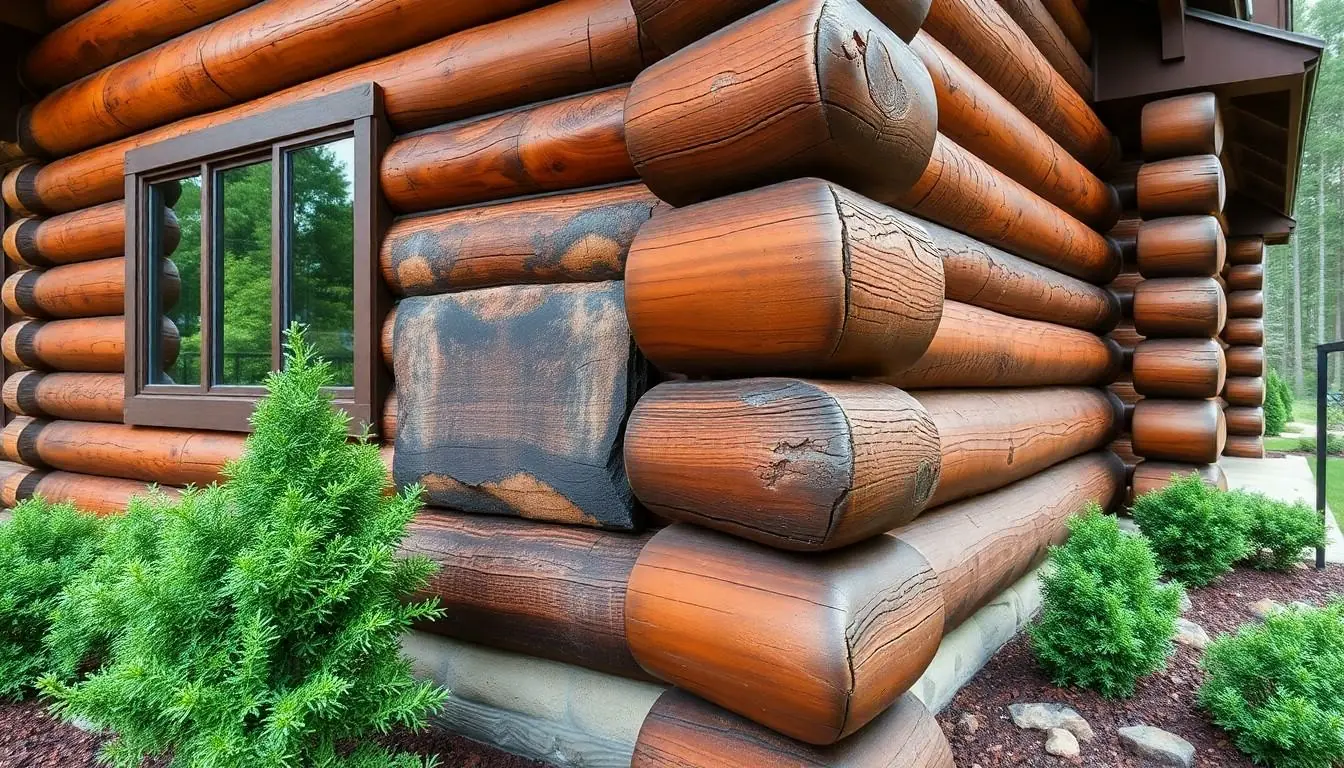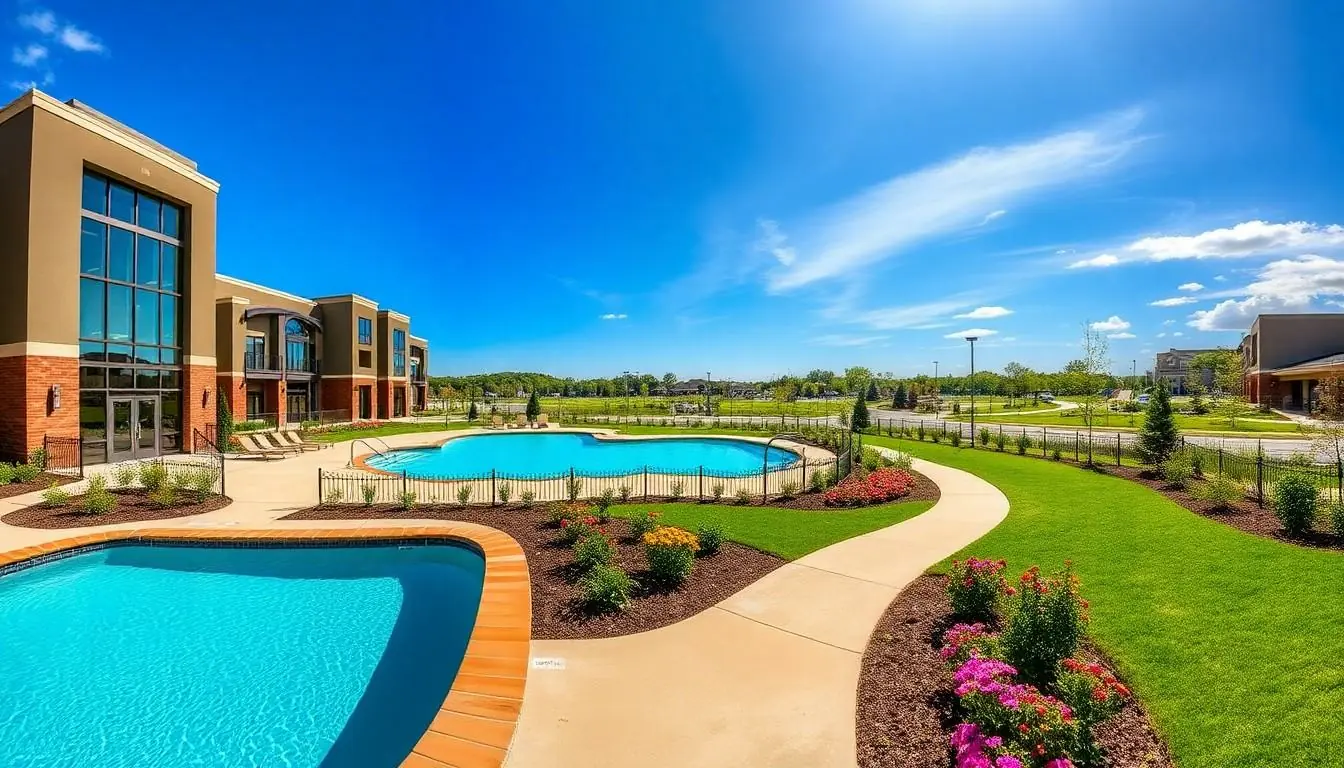Log homes are the cozy cabins of dreams, offering rustic charm and warmth. But like a beloved pet, they require a bit of TLC to keep them looking their best. Neglecting maintenance can lead to issues that might make even the most seasoned log home lover cringe. From pesky pests to weather-worn wood, a little attention goes a long way in preserving that picturesque façade.
Imagine your log home as a fine wine—it gets better with age, but only if you store it properly. Regular maintenance not only enhances its beauty but also protects your investment. So grab your toolbelt and prepare to dive into the world of log home upkeep. With a few simple tips and a sprinkle of humor, maintaining your log home can be as enjoyable as a cozy evening by the fireplace.
Table of Contents
ToggleImportance of Log Home Maintenance
Log home maintenance plays a crucial role in safeguarding the structural integrity and visual charm of these unique dwellings. Homeowners benefit immensely from regular upkeep, enhancing both the longevity and value of their property.
Benefits of Regular Maintenance
Regular maintenance serves multiple advantages. It prevents moisture accumulation that leads to rot and decay. Scheduled inspections identify and address small issues before they escalate into costly repairs. Protecting against pest infestations ensures a healthier living environment. Regular cleaning enhances the home’s appearance, maintaining curb appeal. Ultimately, consistent maintenance increases property value, making it a smart investment.
Consequences of Neglect
Neglecting log home maintenance can result in severe repercussions. Weather damage becomes more pronounced, leading to expensive repairs. Pest infestations thrive without regular inspections, compromising structural integrity. Staining and weathering diminish aesthetics significantly, impacting marketability. High moisture levels increase the risk of mold growth, posing health hazards. Ignoring maintenance ultimately diminishes the home’s lifespan and decreases property value.
Common Issues in Log Homes

Log homes face several common issues that can impact both their structural integrity and aesthetic value. Awareness of these problems is key to effective maintenance.
Wood Rot
Wood rot emerges primarily from moisture exposure. Signs include dark or discolored areas on logs and soft, spongy textures. Left unchecked, rot weakens structural components. Regular inspections can identify early signs of rot, allowing homeowners to treat affected areas promptly. Using coatings that repel moisture protects logs from the elements. Additionally, maintaining proper drainage and ventilation around the home minimizes the risk of rot.
Pest Infestations
Pests can wreak havoc in log homes, making prevention crucial. Common offenders include termites, carpenter ants, and wood-boring beetles. Early detection of these pests often saves time and money. Homeowners should look for signs such as small holes in wood, sawdust accumulation, or nesting materials. Sealing cracks and crevices helps deter pests from entering the home. Implementing regular pest control inspections ensures infestations are managed before they escalate.
Essential Maintenance Tasks
Log home maintenance combines routine care and attention to keep the structure sound and attractive. Engaging in essential tasks ensures the longevity of the home and protects the investment.
Cleaning and Sealing
Regular cleaning of log homes prevents the buildup of dirt and debris that can trap moisture. Use a mild detergent with water for surface cleaning, focusing on areas prone to mold growth. Effective sealing protects against water penetration and UV damage. Applying a high-quality sealant enhances the logs’ natural beauty while creating a barrier against insects and moisture. Schedule re-sealing every three to five years, depending on local climate conditions and wood exposure.
Inspections and Repairs
Routine inspections play a critical role in identifying potential problems early on. Inspect logs for signs of wood rot or insect damage at least twice a year, checking both exterior and interior surfaces. Addressing small issues immediately reduces the risk of more significant damage developing over time. Conducting preventive repairs, such as filling cracks and replacing damaged pieces, maintains the home’s structural integrity. Timely management of these concerns contributes to the overall health of the log home and enhances its market value.
Seasonal Maintenance Tips
Maintaining a log home throughout the seasons ensures its longevity and beauty. Seasonal care includes specific tasks tailored for spring, summer, fall, and winter.
Spring and Summer Care
Spring marks the perfect time for deep cleaning. Use a mild detergent to remove dirt and grime from surfaces, promoting better air circulation around the logs. Inspect for signs of wood rot, as moisture accumulation can lead to serious issues. Fill any cracks promptly to prevent pest entry. Apply a fresh coat of sealant if previous layers show wear, repeating this every three to five years based on environmental exposure. Regularly checking gutters and downspouts also prevents water damage, ensuring a well-maintained home.
Fall and Winter Preparations
As temperatures drop, focus shifts to weatherproofing. Inspect the exterior for gaps and cracks, sealing them to prevent drafts and heat loss. Clearing gutters of debris is essential to maintain proper drainage and avoid ice dams. Checking insulation in the attic helps maintain consistent temperatures inside. Before snow accumulation, ensure that trees near the home are trimmed to reduce the risk of falling branches. Conducting these preventive measures safeguards the home’s structural integrity through harsh winter conditions.
Professional Help vs. DIY
Log home maintenance can involve many tasks, raising the question of when to hire a professional. Certain situations demand expert attention, especially if a homeowner encounters extensive wood rot or pest damage. Hiring a specialist often ensures thorough inspections, as they possess the tools and knowledge to identify hidden issues. Structural repairs, particularly those requiring significant log replacement, also benefit from professional expertise. It’s crucial to act promptly if water damage starts leading to mold growth. Engaging a professional can alleviate stress, especially when dealing with dangerous tasks like high-velocity power washing.
When to Hire a Professional
Utilize expert services for complex issues or major repairs. For instance, professionals excel in treating mold effectively, providing safe removal while maintaining the home’s integrity. Homeowners should consider hiring specialists for tasks involving intricate treatments or specialty coatings. If logs require significant refinishing or restoration, professionals with specific equipment can achieve the best results. Indicators of serious problems like persistent leakage or extensive wood damage also signal the need for expert intervention.
Cost Considerations
Understand the financial implications of either option when deciding between DIY and professional help. DIY maintenance may save money initially; however, it’s critical to ensure the individual’s skill level aligns with the task’s complexity. Professional services come at varying costs, with many charging hourly rates or flat fees based on project scope. Expenses typically range from $50 to $150 per hour, depending on local market rates and service complexity. Weighing the potential costs of prolonged issues from DIY mistakes against hiring an expert often leads to a more informed decision. Prioritize long-term investment in home health over short-term savings.
Maintaining a log home is essential for preserving its beauty and structural integrity. Homeowners should embrace regular upkeep as a valuable investment in their property. By staying proactive with maintenance tasks like cleaning inspections and sealing, they can prevent costly repairs and enhance their home’s curb appeal.
Seasonal tasks play a significant role in protecting log homes from the elements. Whether opting for DIY projects or hiring professionals it’s vital to assess the specific needs of the home. Ultimately consistent care not only safeguards the investment but also ensures that the log home remains a cherished sanctuary for years to come.







